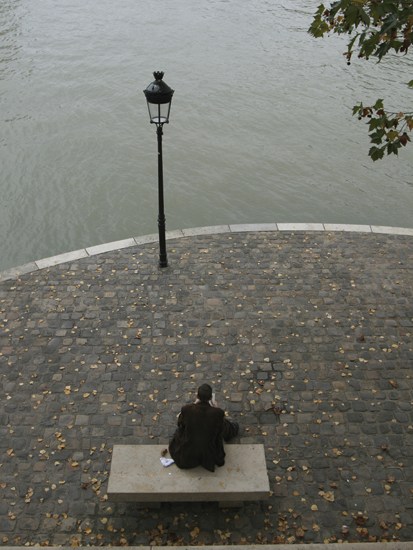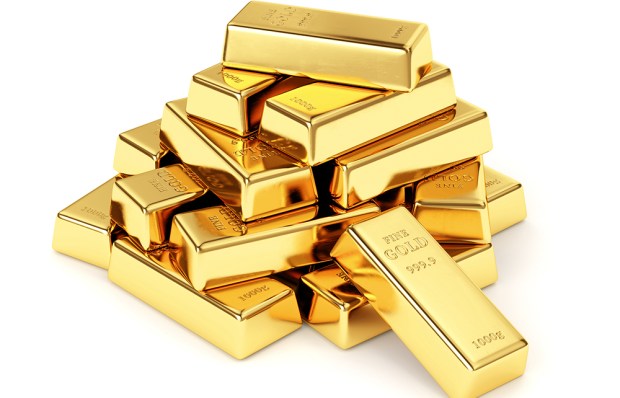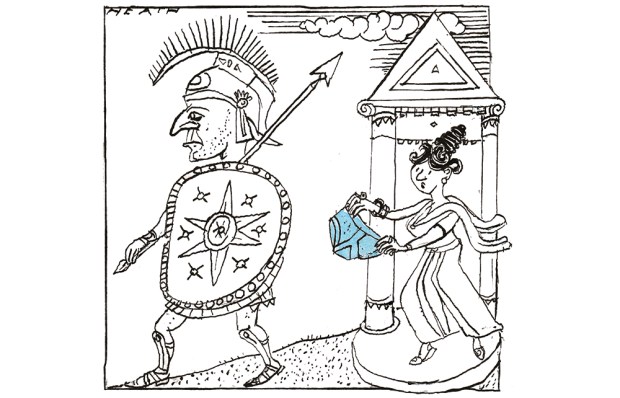Autumn in Paris has been immortalised in one of Rainer Maria Rilke’s most poignant poems. Having left his wife in Berlin, Rilke moved to Paris in 1902 where he wrote ‘Herbsttag’ (Autumn Day). ‘Whoever is alone now, will remain so for long. He will stay up late, write long letters and wander restlessly in the avenues as the leaves drift.’ If you have ever taken a solitary walk in the gardens of Versailles as the sun glints coldly on the bright autumn colours, you will know that feeling.
For four months of the year, from December to March, living in Paris is like being trapped inside Tupperware. The grey skies are more immovable even than in London. So if you are planning a trip, go in October or November when an Indian summer can produce wonderful effects. It is true that French gardens are never as good as English (a justified payback for the English inability to cook) but some of the Paris parks are very fine. On your next visit to the city, take the time to spend an afternoon in the Bagatelle garden within the Bois de Boulogne. Laid out in 1775 in only 64 days as the result of a bet between Marie-Antoinette and her brother-in-law, the Comte d’Artois (the future Charles X), the garden recalls Hyde Park with its vast lawns and rose garden (where there are over 1,000 varieties). At the same time it is also very French, with its ornamental château and orangerie, while the peacocks that strut around are magnificent.
If the weather turns against you, however, you will want to visit a museum. My favourite museum in the world has always been the Cluny, housed in the former palace of the abbot of that famous and now defunct monastery, adjacent to the Roman baths on the Boulevard Saint-Michel. Here is the national collection of medieval art: it is an utter delight. The highlight is, of course, the world-famous series of 15th-century tapestries, ‘The Lady and the Unicorn’, discovered in a château in the Creuse in the late 1830s, which depict the five senses culminating in an allegory of love. (Be aware that the tapestries are in Japan until the end of this year, while the rooms in which they hang are restored.) But the rest of the collection is breathtaking too. Indeed, the items are often moved around and replaced with stock from the reserves. Among my favourites are a huge 12th-century crucifix on the ground floor, delightful polychrome 13th-century life-size statues of Mary and John currently on the first floor, and a magnificent 12th-century bronze altarpiece depicting the descent of the Holy Spirit. The stained glass and illuminated manuscripts are superb; there is also a spectacular 14th-century trestle table from Germany, painted with wonderful heraldic designs.
Another gem is the Museum of Letters and Manuscripts at 222 Boulevard Saint-Germain. Ever since the National Archives closed its permanent collection, this is the only place to see some of the most important documents in the history of France. Founded in 2004 by the businessman Gérard Lhéritier, but housed in its present premises since only 2010, the museum has over 100,000 documents illustrating the history of France and the world, starting with Sumerian tablets and finishing in the 20th century. You can see here, for instance, Louis XVI’s handwritten speech for his address to the Estates General on 23 June 1789, as well as his political testament from 1793; a letter by Charlotte Corday, the woman who killed Marat, discovered in her pocket at her arrest and explaining her motives; Einstein’s notes elaborating the theory of relativity; hundreds of messages written by Charles de Gaulle during his first months in London; acts signed by the greatest French kings from Charle-magne in 825 onwards; letters by Europe’s greatest artists, from Cranach the Elder to Picasso; and huge numbers of letters and notes from the world’s greatest literary figures. This museum is unique in Paris and the largest of its kind in Europe.
If you decide that a little shopping is in order after your museum visit, why not buy someone a stuffed animal for Christmas? Not far from the Musée des Lettres et Manuscrits, in the Rue du Bac, is the famous taxidermist Deyrolle, which has now reopened after a fire destroyed a large part of the shop in 2008. Here you can find a huge collection of insects, including butterflies, molluscs, barnacles, stuffed birds (the owls are particularly lovely), and plenty of larger animals — warthogs, kangaroos, monkeys, goats, deer, lions, bears, badgers, swans, zebras — as well as fish and reptiles galore. If you are a fan of Flanders and Swann, you might like the mounted head of a gnu (currently on sale for €2,200) or perhaps a stuffed crocodile (€10,000). Birds are cheaper, with a golden pheasant at around €650. At any rate, you are welcome to browse and, at the weekend, many families with young children do.
Naturally your thoughts will soon be turning to food. If you are near Deyrolle, you might like to eat at Aux Vieux Garçons (213 Boulevard Saint-Germain) where neither the décor nor the menu has changed for a hundred years (although the name has) or, a little further away, at the excellent Basilic (i.e. basil) opposite the basilica (geddit?) of Sainte-Clotilde. The brasserie is about as typical a Paris restaurant as you can get, serving Basque food to the well-to-do inhabitants of the 7th and often to politicians too, with the National Assembly and many ministries nearby. The basilica itself, magnificent and rather Puginesque, is well worth a visit (the Stations of the Cross are particularly fine). Captain Dreyfus was arrested across the road from here in 1894, while in 1905 the parishioners barricaded themselves inside the church with pews, in a desperate attempt to prevent the state expropriation of church property: they were removed only after a long and violent pitched battle with the police.
For your return home, you will want to bring back a souvenir. What better than cheese? The Left Bank is home to three of Paris’s best cheesemongers: Barthélemy on the corner of Rue de Grenelle and Boulevard Raspail, Marie Quatrehomme at 62 Rue de Sèvres and my favourite, Laurent Dubois, on Place Maubert in the 5th. Bonne dégustation!
Got something to add? Join the discussion and comment below.
Get 10 issues for just $10
Subscribe to The Spectator Australia today for the next 10 magazine issues, plus full online access, for just $10.
You might disagree with half of it, but you’ll enjoy reading all of it. Try your first month for free, then just $2 a week for the remainder of your first year.














Comments
Don't miss out
Join the conversation with other Spectator Australia readers. Subscribe to leave a comment.
SUBSCRIBEAlready a subscriber? Log in